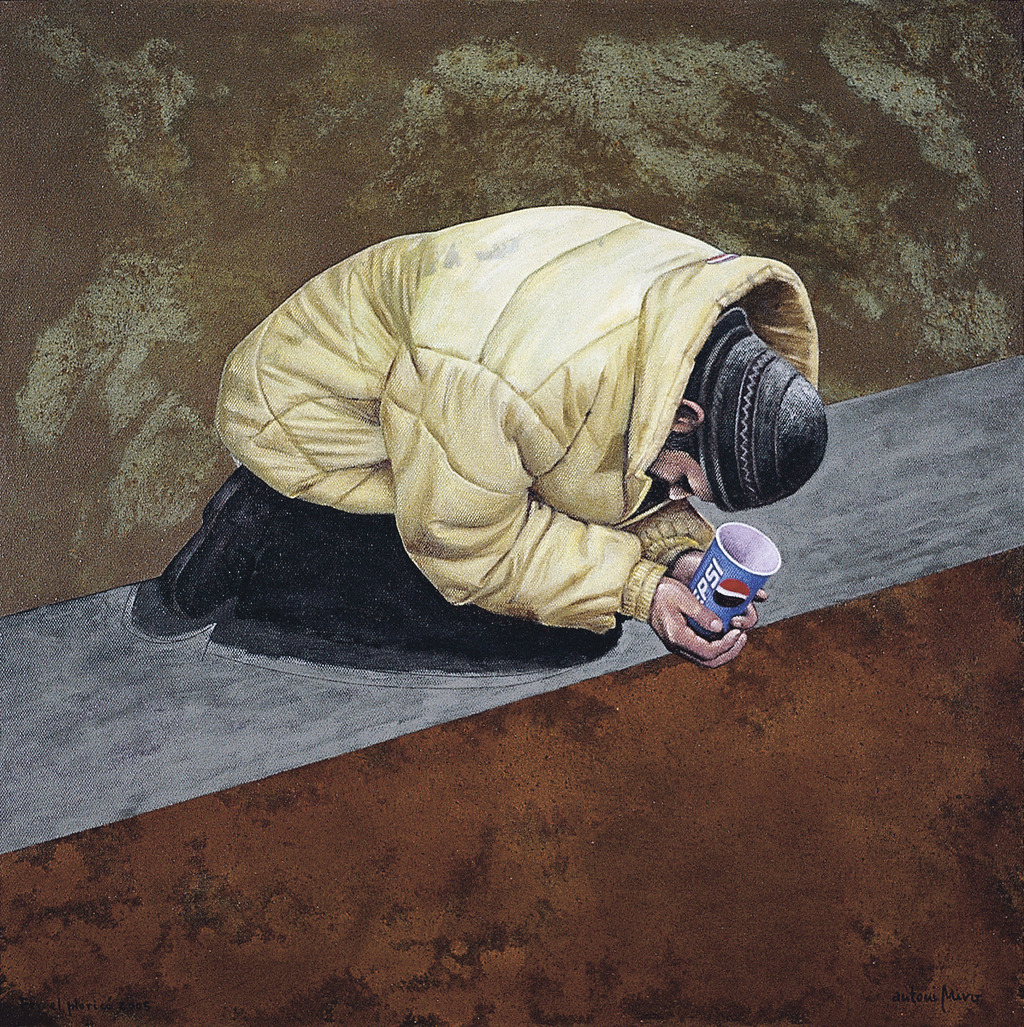Fer el ploricó (The whiner)
Fernando Castro has written on Antoni Miró’s work that “the critical-artistic task involves facing conflicts honestly, even if is through unsettling pictures”. This is one of those images which produce a cold uneasiness when viewed. It is a case in point of what José María Iglesias has called “traces” of the “inhumanity of the supposedly human being”. The “manifest ethical impulse” that Ernest Contreras attributed to his output is brought up to date in Miró’s work thirty years later in the scene depicted here.
In the midst of the economic boom, the gap between rich and poor was widening and some people without resources were being marginalised. Clearly, it is humiliating to have to beg. Yet this is made even worse if potential donors doubt if there is a real necessity to do so. Thinking that a person in need is a whiner is a clear example of the iniquity of wealthy societies.
This painting by Antoni Miró focuses on the beggar’s personality, stripping the figure of the environment that serves as background. There are no clues about the city or street, precisely because it could happen almost anywhere. What we can see though is the beggar’s suffering and the social drama it represents. The man is ashamed, and kneels looking at the ground, hoping that someone will drop a few spare coppers into his paper Pepsi beaker. The beggar’s garb suggests cold weather, and we can also infer the failure at his attempt.
A ‘pavement’ of sorts, on which the figure is set, is delimited by two planes, which the artist textures by using metal filings fixed by pigments. This technique provides a material qualification that enhances the work as an artistic object. The iron and bronze filings give the canvas a reddish base strip and a greenish upper strip. A smooth grey plane runs across the middle of the painting.
That abstract treatment of the background, with which a small shadow is cast too, contrasts with the hyper-realistic representation of the figure and his clothes. The folds and seams of the jacket, the cap’s fabric, the definition of the hands, the shape of the shoe, and the Pepsi beaker all aim at an extraordinarily level of concretion, which tells itself apart from the generalisation that this scene will acquire a few years later, as if it was an uncanny terrible premonition.
Santiago Pastor Vila
